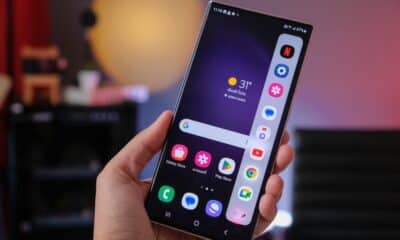Phones
Simple Steps To Enhance Productivity Of Your Android Phone
The Android operating system, known for its widespread adoption and adaptability, provides a rich experience for both users and developers. Nevertheless, there are several specific areas where focused improvements could greatly enhance the overall Android experience. In the video below from HowToMen, these areas are examined, shedding light on their effects on device performance and user satisfaction.
Challenges with Third-Party Launchers
Customizing your Android device through a third-party launcher can lead to frustrations regarding navigation gestures and animations. This arises due to the limited API access given to launcher developers, which hinders their ability to seamlessly integrate their functionalities with the Android ecosystem. Consequently, users may notice a lack of consistency in the responsiveness and fluidity of their devices compared to the default launcher.
- Inconsistent navigation gestures
- Lack of uniform animations and transitions
- Constrained customization capabilities due to API limitations
Delayed Feature Rollouts
A significant area needing enhancement is the prompt incorporation of new features into stock Android. While many OEMs have been implementing particular features for several years, stock Android often falls behind. For instance, functionalities such as scrolling screenshots and screen recording have only recently been integrated into the stock version, which can be frustrating for users who count on these features for daily tasks and seek a more current experience from their devices.
Improvements for One-Handed Use
The growing size of smartphone screens has made one-handed usability an essential aspect of user interaction. Currently, stock Android does not provide as many intuitive one-handed features as other brands like Samsung and OnePlus. The lack of a dedicated one-handed mode or optimized UI elements makes it tricky to navigate larger devices comfortably with just one hand. Implementing thoughtful enhancements for one-handed usage would significantly benefit many Android users.
Refining Notification Management
Though Android’s notification system is powerful, it could use better organization and prioritization. With users receiving a growing number of notifications from various apps, the system can quickly become overwhelming. By implementing smarter categorization and enabling users to easily distinguish important alerts from less crucial notifications, Android could assist users in focusing on what matters most, without being swamped by a continuous influx of notifications.
- Improved notification grouping by app categories or priority
- Customizable notification channels for precise control
- Enhanced Do Not Disturb feature with greater settings
Limitations of Third-Party Camera Applications
While the Android platform features a wide variety of third-party camera applications, these often fall short in camera quality compared to the native app. This is primarily due to the restricted access to advanced camera functionalities available to third-party developers. As a result, photographs captured using these apps might lack the level of detail, dynamic range, or processing prowess found in the native camera application. Broader API access and more comprehensive camera libraries would enable developers to create higher-quality photographic experiences for users.
Inconsistent Software Updates
An ongoing issue in the Android ecosystem is the inconsistency of software updates. The timelines for feature enhancements and security patches vary significantly among device manufacturers and individual models. Additionally, geographical disparities can leave some users waiting for improvements that others have already begun to enjoy. This fragmentation can be frustrating, particularly when users are aware of the enhancements to device performance, security, and functionality that updates can offer. Streamlining the updating procedure and ensuring more uniform rollout across devices would greatly benefit the Android community.
Design of the Volume Panel
Lastly, the design of the volume panel in stock Android could benefit from some refinement. The current version features an unnecessarily large and obtrusive panel that can interrupt the user experience, especially during quick volume adjustments. A more streamlined and compact design would enhance usability and facilitate volume changes without blocking the view of content on the screen.
- A more compact volume panel that doesn’t obscure content
- Intuitive volume control gestures
- Customizable position and transparency of the volume panel
In summary, while Android is undeniably a powerful and adaptable platform, addressing these critical areas could significantly enhance the overall user experience. By focusing on improving third-party launcher functionality, expediting the adoption of new features, enhancing one-handed usability, refining notification management, broadening camera API access, ensuring more consistent software updates, and redesigning the volume panel, Android can continue to evolve and better meet the diverse needs of its extensive user base. As Android progresses, prioritizing these enhancements will be vital in sustaining its reputation as a leading mobile operating system that provides a seamless and enjoyable user experience.















